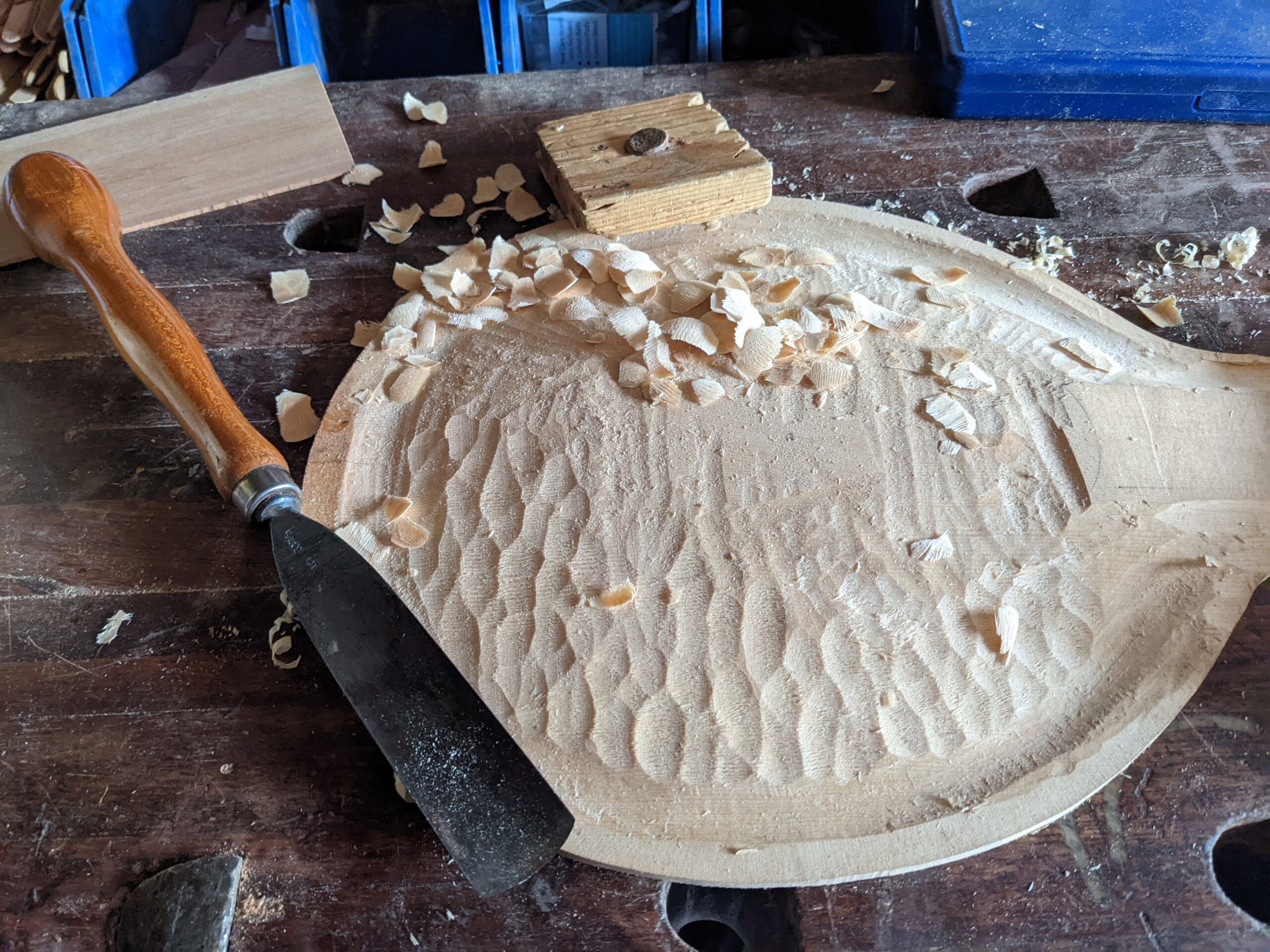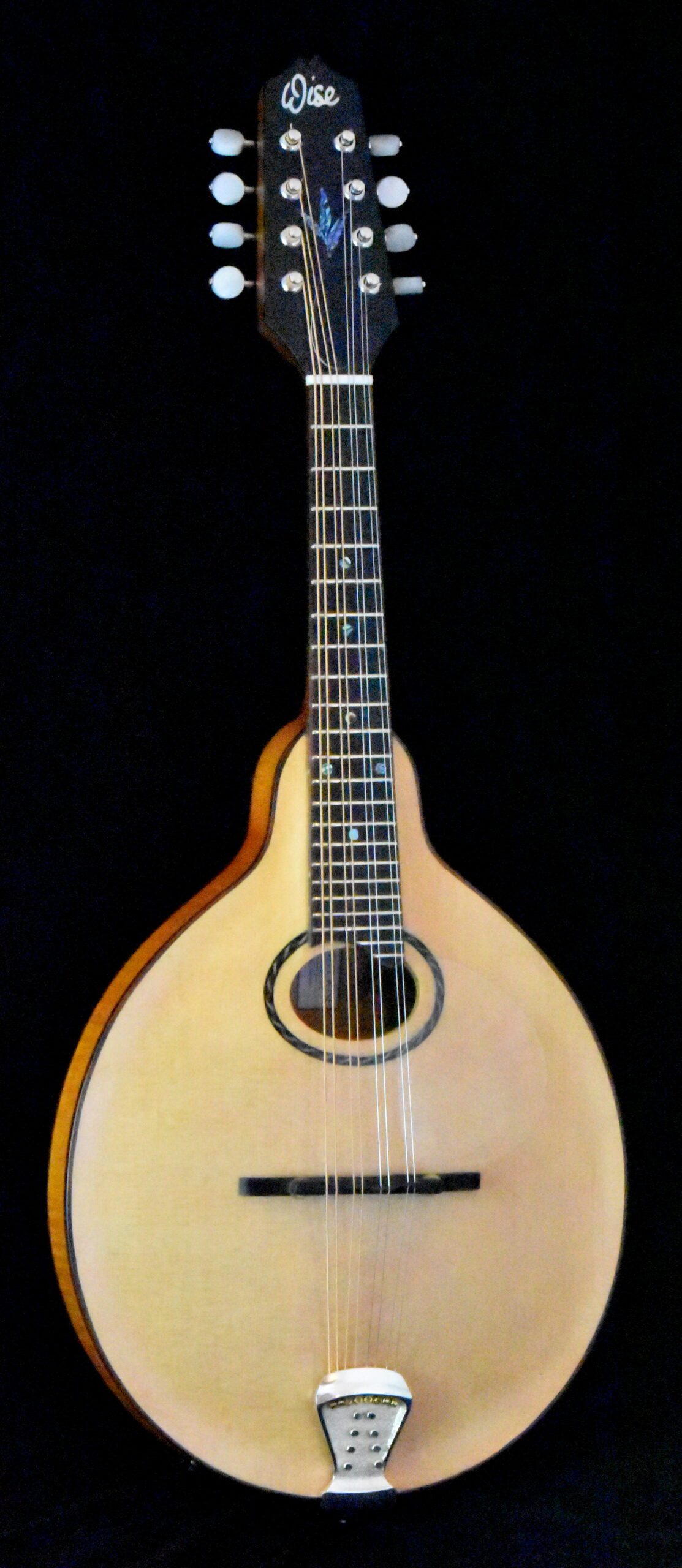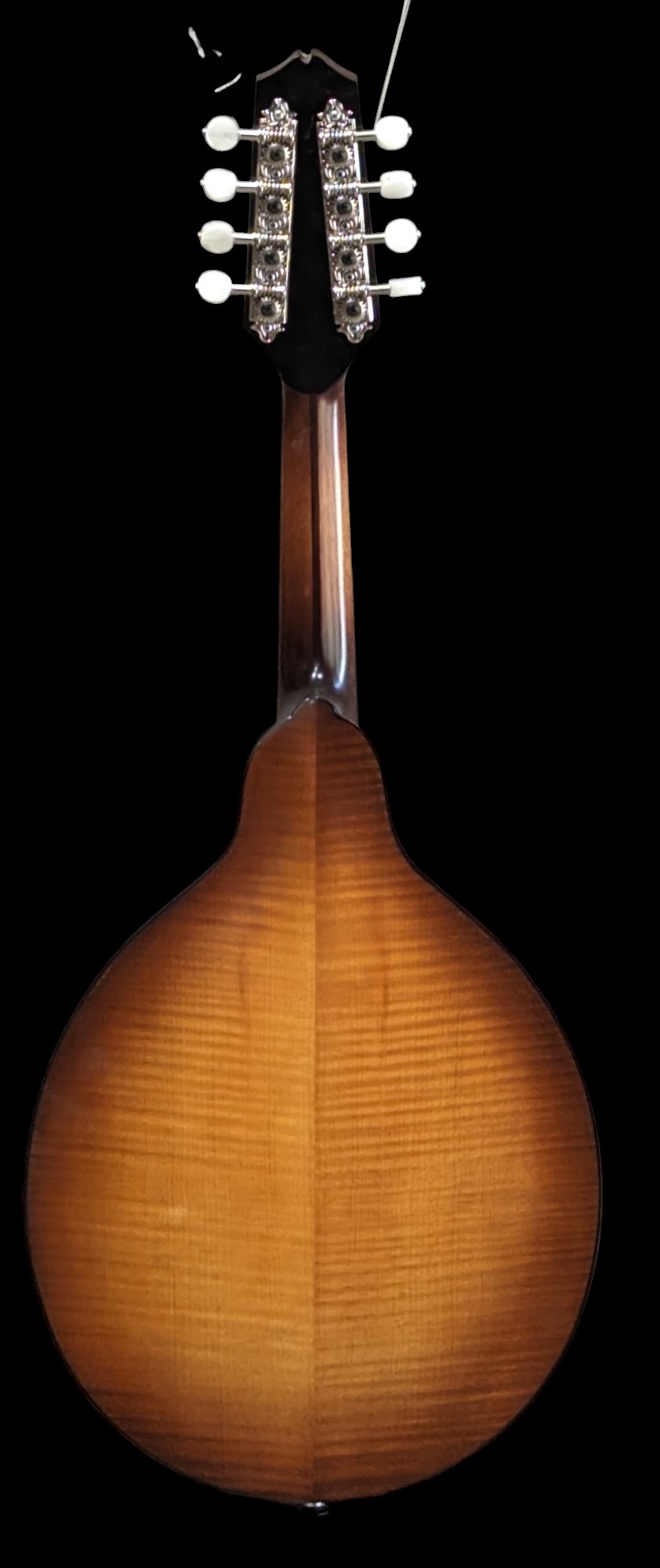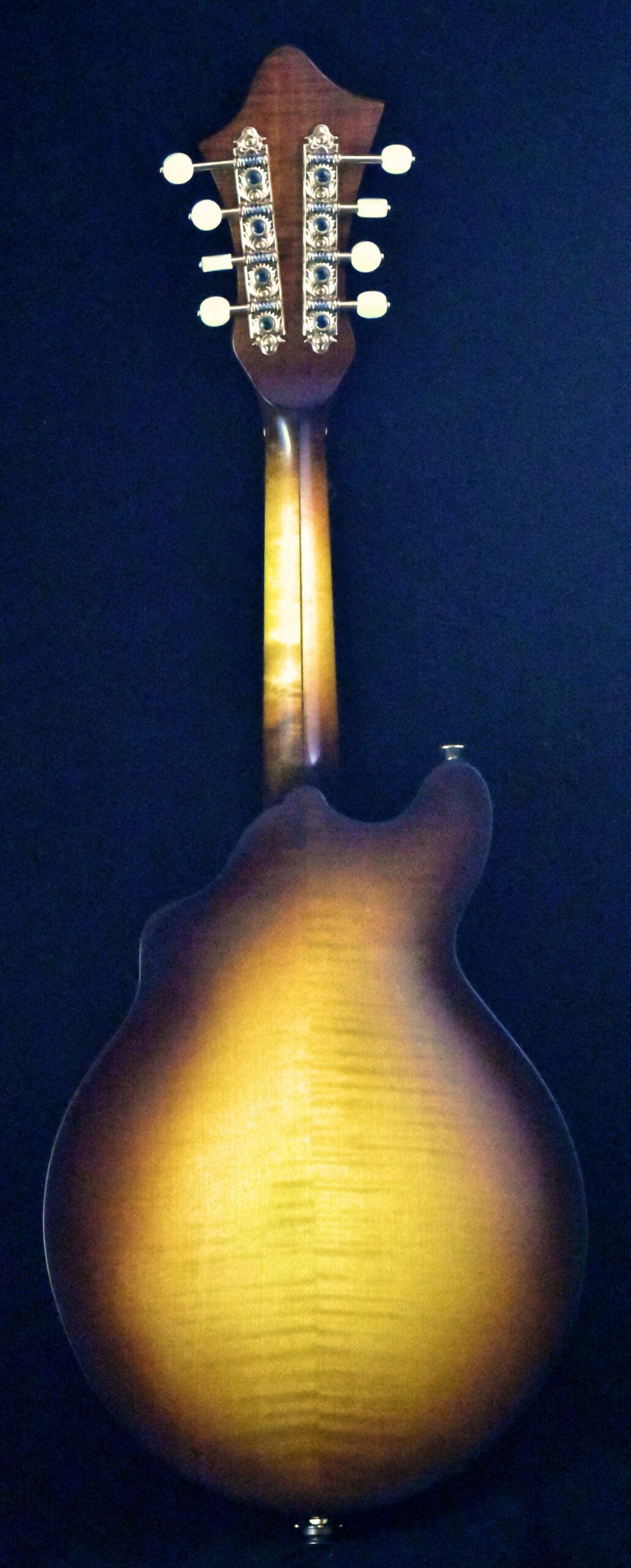
Mandolin Family Models
I was so fortunate to have been able to work with Stephen Gilchrist, master mandolin luthier in Warrnambool, Victoria in 1978. After returning to Western Australia and opening my own shop in Swanbourne and later Fremantle in the 1980s I came into contact with the West Australian Mandolin Orchestra and also with a great musician, John Reed, who owns a Stefan Sobell cittern. Nowadays these are called Irish Bouzoukis. My colleague Graham McDonald of McDonald strings has written very good books on mandolin and Irish bouzouki construction. Exposure to good instruments and the benefit of making many instruments of the mandolin family have given me the ability to settle on several successful models based on both tradition and my own innovations.

A Model Mandolin
Having built many of these simpler carved mandolins over the years, and measured some fine 1920s instruments I have arrived at a design and method which produces the finest A models I have heard. As I was trained in violin making, I carve the plates by hand and have discarded some of the components and methods used by the factories with their carving machines. This enables a different arching of the plates, for a better response and greater stability. After trying several alternatives I have also designed and made my own brass or plated tailpieces which will accept standard loop-end strings or ball-end strings.
F Model Mandolin

The 1920s saw the development by acoustic engineer and musician Lloyd Loar of the F5 master model mandolin at the Gibson factory in Michigan. It was a splendid combination of Art Nouveau design, structual engineering and skilled lutherie. Loar adapted violin-style f holes and a dual tone bar (bass bar) arrangement of logitudinal braces to support the delicately carved top. In order to prevent the carefully graduated instrument folding under string tension at the neck joint the neck block was extended into an ornate scroll on the G 4th string side and an extra corner point was added on the treble side, as well as a further point down towards the tail block on the treble side, which would provide a pivot/balance point for the seated player. The new miracle material, celluloid, was used as body binding and made an elegant contrast to the brown sunburst finish. Plastic binding like this has been used ever since, however I will rarely use it due to shrinkage with age, adhesion problems and the growing distaste for plastics in instruments. I built some of these mandolins. There’s one pictured above.
S Model Mandolin
Bluegrass musicians will generally only use the F5 style instruments because Bill Monroe pioneered the use of it, however I decided that with my violinmaking skills I could modernise and improve on the design using the same engineering and acoustic principles as Loar used for the sound of the instrument. So here’s what I did.
1. Using the same scale length , neck profiles, plate arching and bridge design I made a more complex, curved neck block which terminated on the G 4th side in a 1950s electric guitar-style horn and on the treble side in a rounded cutaway point. This made the neck area extremely strong , allowing the most optimal graduation of the plates.
2. I eliminated plastic binding, instead using rosewood, maple or blackwood binding and coloured violin purfling – no more plastic issues.
3. I used my own brass tailpiece design to allow the use of ball end strings.
CC Model Mandolin
CC stands for Celtic/Classical. Traditional Celtic player often favour flat-backed and often flat-topped mandolins, for their clean, stringy sound. Likewise, modern European mandolin orchestra instruments are often flat topped with a shallow rounded back or flat back. This model is aimed at these players. Compared to the carved -plate American models, the CC mandolin is more economical in materials but somewhat labour intensive to make. The top is formed from two pre moulded pieces of 5 mm spruce and then joined, braced and graduated. I learnt this technique from Canberra Luthier Graham McDonald. I prefer tight-grained spruce tops and various hardwood backs, with Rosewood and Australian Black Acacia being the favourites for a the Celtic/Classical sounds.














